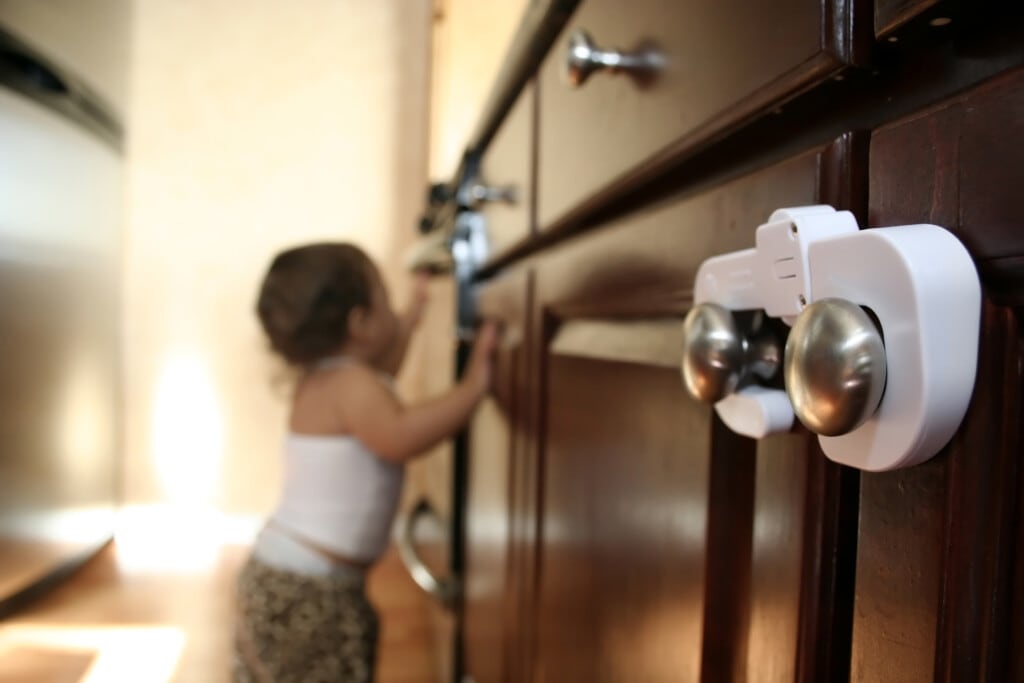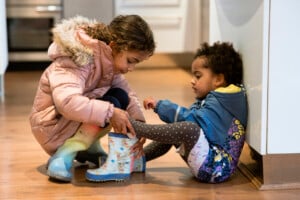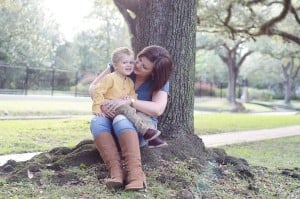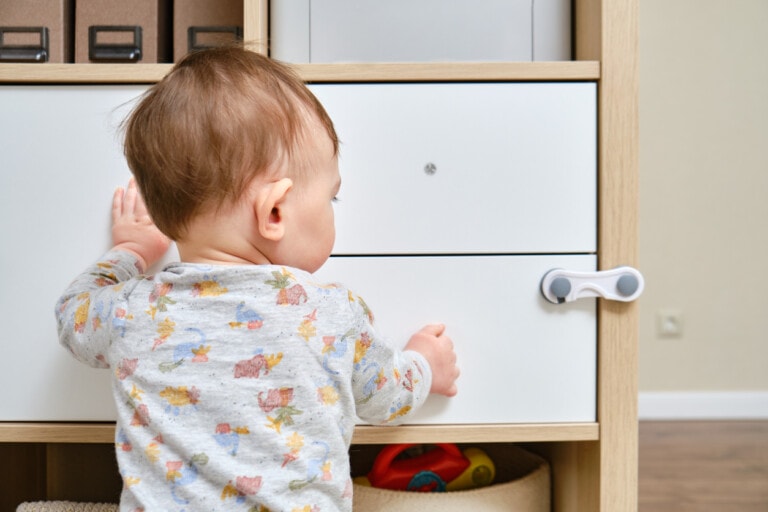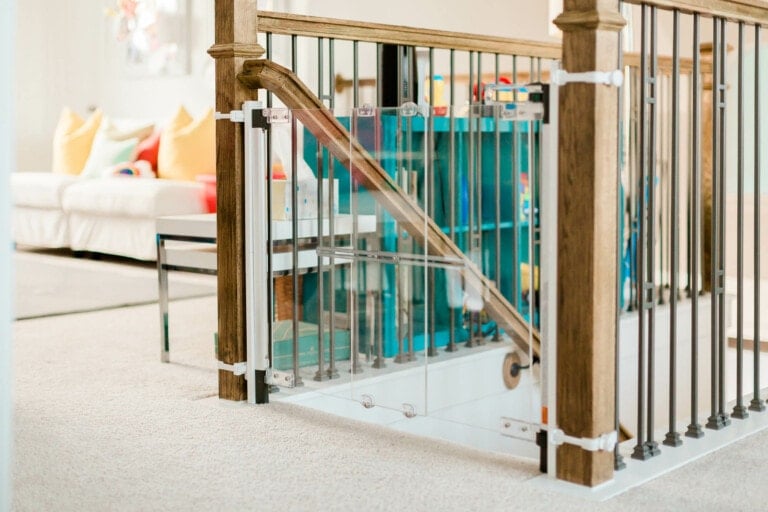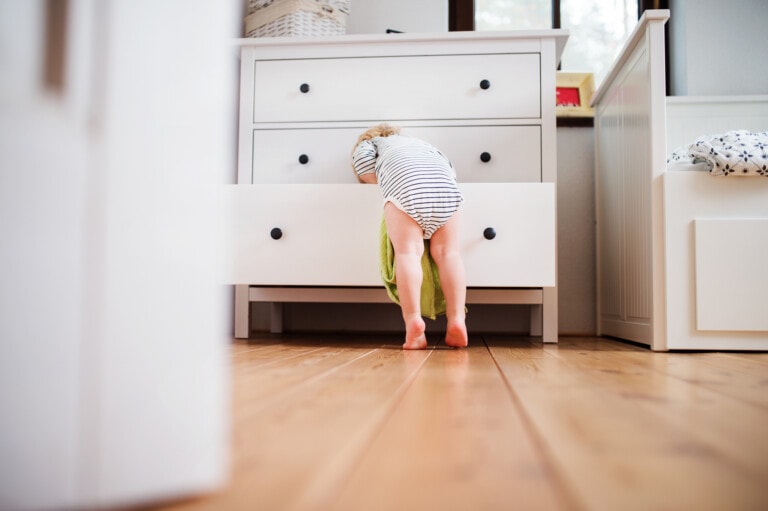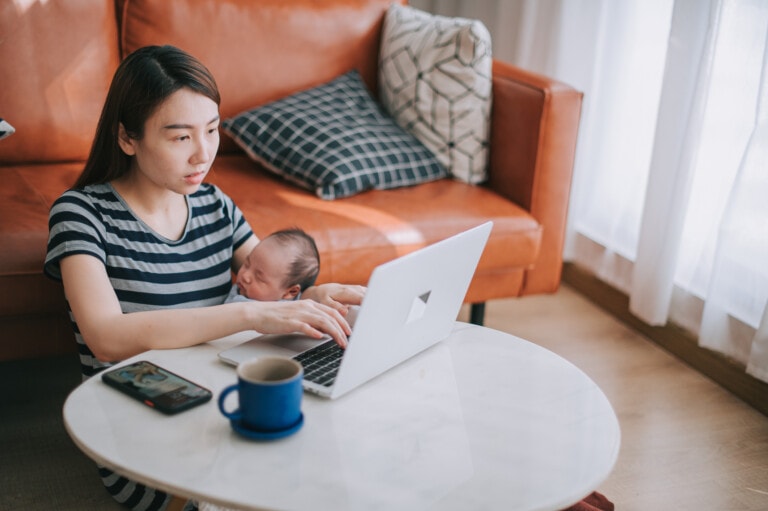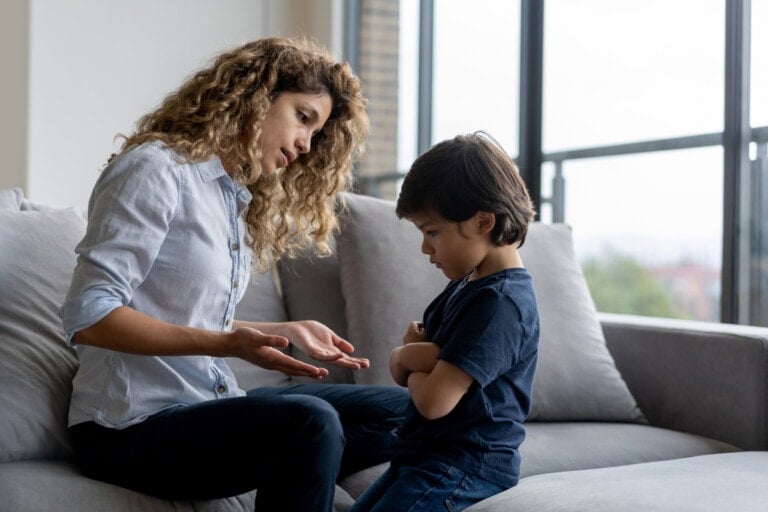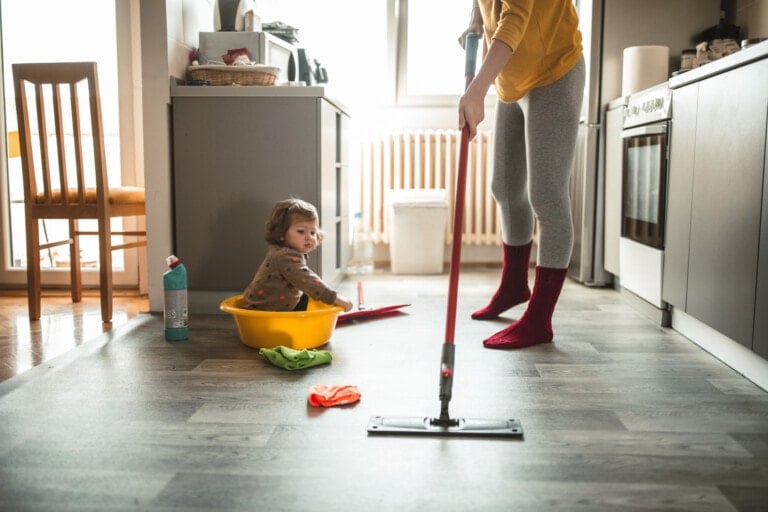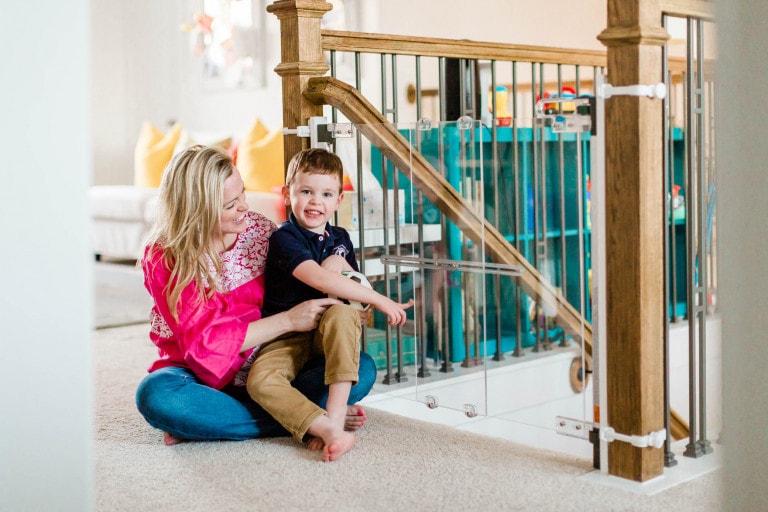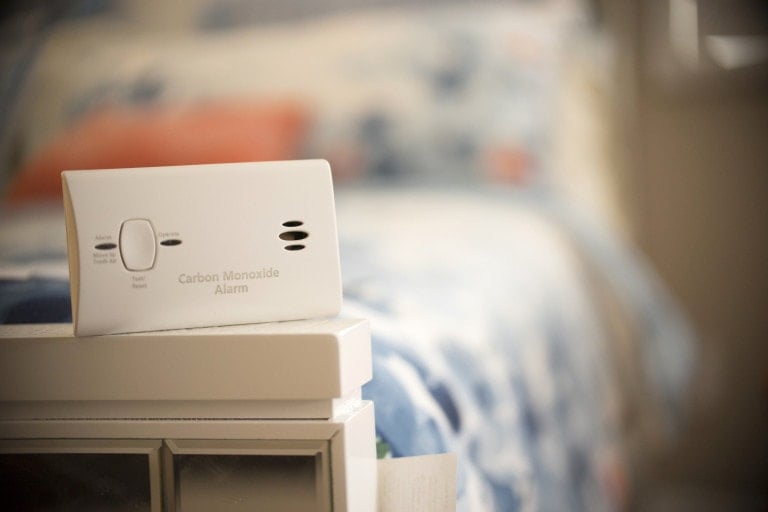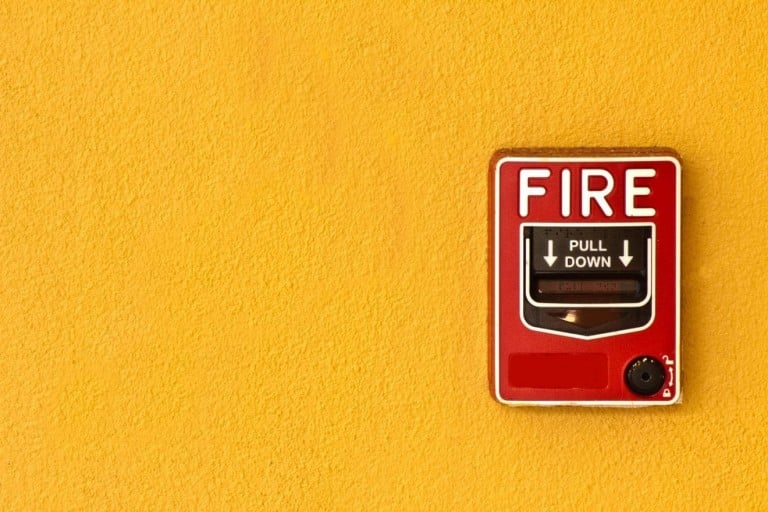Babyproofing can be overwhelming for new parents, with many left feeling confused about where to get started. Before we get into the when and why of common babyproofing tasks, there are two rules of thumb to keep in mind when you begin babyproofing your home.
The first “rule” is to avoid assumptions about your baby’s development. I am often asked, “When should I start babyproofing?” My answer is: the sooner you can, the better! There’s no such thing as “too soon,” but there is such a thing as “too late.” When we convince ourselves that a baby isn’t yet capable of rolling, crawling, or walking, that’s often the day they do! We’ve all heard stories of babies who surprise their parents with a new milestone long before it was anticipated. We should therefore aim to be a few steps ahead, if possible.
The second rule is not to unintentionally create new hazards! Babyproofing is ultimately about safety. We can unintentionally create new hazards when we get “creative” with the babyproofing process. Typical examples of this include DIY stair gates and using pet gates. Baby stair gates are manufactured to specific safety standards to protect children from injury. However, we’ll often see images of beautiful DIY stair gates online and may consider this for our own home to match our home’s decor. However, these types of gates are often built with gaps that can lead to entrapment injuries or horizontal bars that children use to climb. They also may not withstand the same wear and tear the same way that baby gates meeting standards do.
Babyproofing: When and Why
Now that you know the basic rules, let’s jump into the when and why of babyproofing!
Things to consider before they’re born.
Wait, I should babyproof before they’re born? Not necessarily, but hear me out! At some point, all parents will require babyproofing supplies, and what better way to acquire them than to add them to your baby registry? Take an assessment of your home’s risks and what items you may need. For example, if you live in a multi-level home, stair gates can add up quickly. Receiving them as a baby shower gift is a huge help!
Common babyproofing items to consider:
- Covers for outlets
- Knob or lever covers for doors
- Locks for cabinets
- Anchoring straps for furniture and televisions
- Covers for baseboard heaters
- Covers or wind-ups for loose cords
- Bumpers for sharp furniture corners
- Gates for fireplaces, stairs, or other living areas
Again, there’s no harm in being proactive. If you are going to pick one task to babyproof your home before baby arrives, I strongly recommend anchoring your furniture and televisions to the wall. The US Consumer Product Safety Commission (CPSC) estimates that a child dies in a tip-over incident every two weeks.1 This is a commonly overlooked hazard and among the most serious. The CPSC has set up an excellent tip-over prevention campaign, AnchorIt!, to help parents learn how to anchor furniture and televisions properly and what tools and materials they will need.
Things to consider between 0-6 months.
1. Covers for electrical cords, including baby monitor cords.
As a general rule, all cords should be kept a minimum of three feet away from a baby’s crib. This includes blind cords, baby monitor cords, and other electrical cords. I’m a huge fan of using outlets behind an anchored piece of furniture and leaving the cord behind the furniture and out of reach.
However, that’s not always possible. Monitor cords can be particularly challenging, as we often want a clear, birds-eye view of our baby. But, how is that possible without the monitor cord getting within reach of the baby? That’s where “cable concealers” come in! Cable concealers are adhesive plastic channels that you fix to your nursery wall. A cable is then inserted into the channel, and a cover is snapped over the top to enclose it. Yes, the cord is there, but it’s no longer accessible for the baby to pull on. These can also be useful if you have loose cords in a living area or play area.
2. Cord wraps for blind cords.
As above, blind cords should also be a minimum of three feet away from a baby’s crib. In reality, any blind cords in the home can be a hazard, not just in the nursery. Installing basic cord wraps is an easy way to keep loose blind cords stored up and out of reach.
3. Covers for outlets.
Outlets on walls and often on the end of kitchen counters or kitchen islands are within reach of small children. To prevent burn risk, there are a few ways we can manage this hazard:
- Outlet covers or “caps“: this is the most common solution, but many babies and toddlers quickly defeat this style.
- Sliding outlet covers: this option replaces the entire outlet plate and requires a mechanism to be slid out of the way before a plug can be inserted.
- Outlet box covers: this is my favorite option and allows outlets to be covered safely, even while in use. A large box replaces the outlet cover and is spacious enough for cords to be plugged into the wall while inside. These are especially great if you’re in a home with a limited number of outlets.
4. Covers for baseboard heaters.
Baseboard heaters and the risk of burns are common sources of concern for parents. The good news: there are baseboard heater covers! In North America, they are supplied by a company called Baseboarders. These covers prevent small hands from touching the inside of the heater, which is a common cause for both burns and bleeding injuries in babies and toddlers while still allowing for safe airflow.
5. Stair gates.
If you have stairs, a gate is one of the most important ways to babyproof your home. Gates are crucial in homes with stairs and can prevent one of the leading causes of injury to babies and toddlers: falls. It’s also important to remember that babies can go from stationary to mobile in a blink of an eye. Therefore, the gates should be up by the time your child is six months old, at the latest. And yes, even if a child’s not crawling yet — because they could be crawling tomorrow!
At the top of the stairs, you should always use hardware-mounted gates. You can use pressure-mounted gates at the bottom of the stairs or when dividing two rooms on the same level (such as separating a kitchen from a living room). Of course, you could use hardware-mounted gates throughout the home. But you should never use pressure-mounted gates at the top of stairs because they can be, and have been, knocked down by babies and toddlers. This can lead to a fall down the stairs WITH the gate.
6. Fireplace gates.
You can also use gates to prevent burns from fireplaces or wood stoves. Even gas fireplaces with glass doors can be hot enough to burn a child with just the pilot light on! Look for “configure” or “hearth” style gates when searching for a gate to fit around your fireplace. These gates will typically have three sides and mount to the wall on either side of the fireplace.
Things to consider at six months and beyond.
1. Corner guards for sharp furniture.
As your baby becomes more mobile, sharp furniture corners, especially on lower furniture like coffee tables, are often at a level that can cause head or eye injury. Corner guards can reduce this risk significantly.
2. Knob or lever covers for doors.
A mobile baby is a curious baby, and preventing access to areas with water is especially important. Knob or lever covers for doors to rooms where they shouldn’t venture unattended can provide peace of mind. If you have a sliding pocket door, a device named Door Smoocher can help prevent the door from being opened by a small child.
3. Locks for cabinets.
A curious, mobile baby or toddler quickly investigates what’s inside all those cabinets around the home. While some children may be less interested in cabinets than others, there’s no harm in erring on the side of caution with this one. Children are much less likely to take an interest in cabinets if they can’t open them.
From my own parenting experience, my first child did not express interest in the cabinets around the home. My second, however, was quick to pull on all the cabinet doors. When making this choice, remember why we would lock a cabinet door: potential poisoning risk (household cleaners) and bleeding risk (pots, pans, knives) are the two most common concerns.
Knowing when to babyproof your home shouldn’t cause you extra stress! Hopefully, these tips have clarified when and why to babyproof your home. Avoiding making assumptions about your baby and staying one step ahead is the key to keeping your baby out of harm’s way. If you want someone to help you properly babyproof your home, visit the International Association for Child Safety website (here) to connect with a professional child-proofer in your area.













